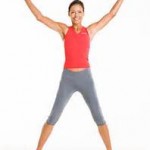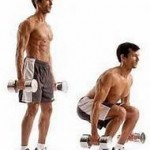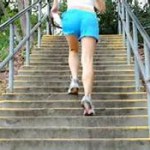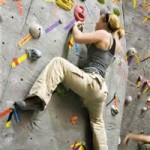Always warm-up for your workout!
A warm-up is an essential component of your workout and should NOT be skipped, or even abbreviated. Prepare your body for exercise with 8-10 minutes of dynamic (moving your body continuously) exercise. You’ll prepare your muscles and your cardiovascular system for the increased work load of exercise. A proper warm-up is any movement of your major muscle groups aerobically. For example:
Walking. Walking outside or on the treadmill makes a great warm up for just about every activity. Start slow and build up speed.
Calisthenics. Jogging, jumping jacks, hopping are all great warm up activities that move many muscles and increase our core temperature.
No load exercises. Perform your weight exercises, without weight. No load exercises are great to develop muscle memory patterns as well.
Range of motion exercises. Move each joint through it’s natural range of motion. For example, wrist circles, ankle circles or knee bending and extending. Do 5-8 reps.
*Consult your physician before beginning exercise.
 Subscribe
Subscribe



